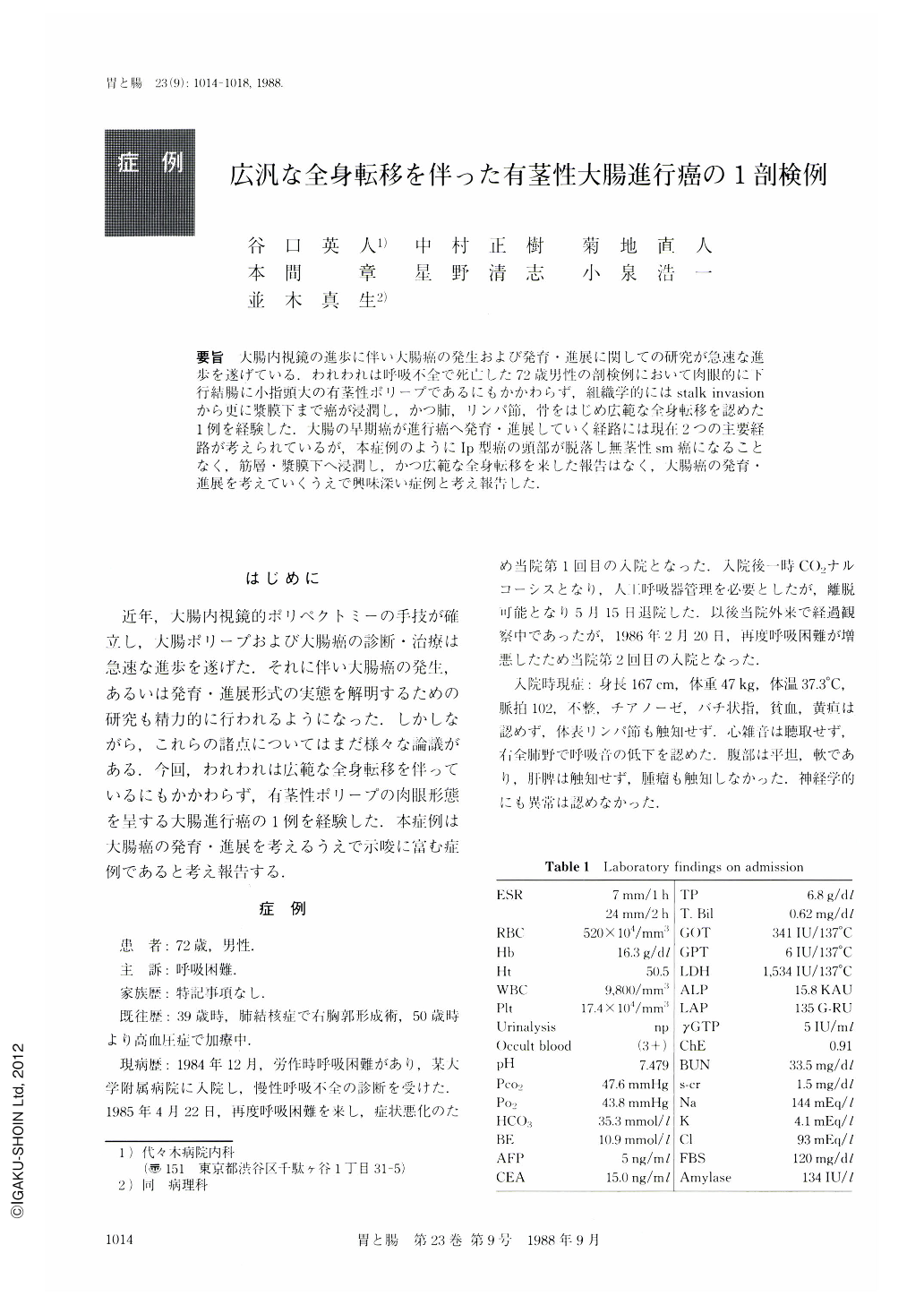Japanese
English
- 有料閲覧
- Abstract 文献概要
- 1ページ目 Look Inside
要旨 大腸内視鏡の進歩に伴い大腸癌の発生および発育・進展に関しての研究が急速な進歩を遂げている。われわれは呼吸不全で死亡した72歳男性の剖検例において肉眼的に下行結腸に小指頭大の有茎性ポリープであるにもかかわらず,組織学的にはstalk invasionから更に漿膜下まで癌が浸潤し,かつ肺,リンパ節,骨をはじめ広範な全身転移を認めた1例を経験した.大腸の早期癌が進行癌へ発育・進展していく経路には現在2つの主要経路が考えられているが,本症例のようにIp型癖の頭部が脱落し無茎性sm癌になることなく,筋層・漿膜下へ浸潤し,かつ広範な全身転移を来した報告はなく,大腸癌の発育・進展を考えていくうえで興味深い症例と考え報告した.
A 72 year-old man with a two-year history of chronic respiratory failure was admitted with the chief com-plaint of dyspnea. Laboratory data on admission (Table 1) revealed hypoxia, hypercapnea, positive fecal occult blood, and elevation of LDH, ALP and CEA titer. About two weeks later he died of associated cardiac failure. At autopsy, a pedunculated polyp was noticed at the descending colon (Fig. 1, 2).
Histological study, however, revealed well differentiated-poorly differentiated adenocarcinoma with extensive lymphatic and venous permeation from the submucosa to the serosa, as well as invasion of the stalk (Fig. 3~6). Moreovere, marked distant metastases including bilateral lung (Fig. 7), left adrenal gland, and multiple lymph nodes were noticed.
It is very rare that the full thickness of the colonic wall is involved despite the fact that the lesion took the macroscopic form of a pedunculated lesion. This case is very interesting in considering the morphogenesis of large bowel cancer.

Copyright © 1988, Igaku-Shoin Ltd. All rights reserved.


